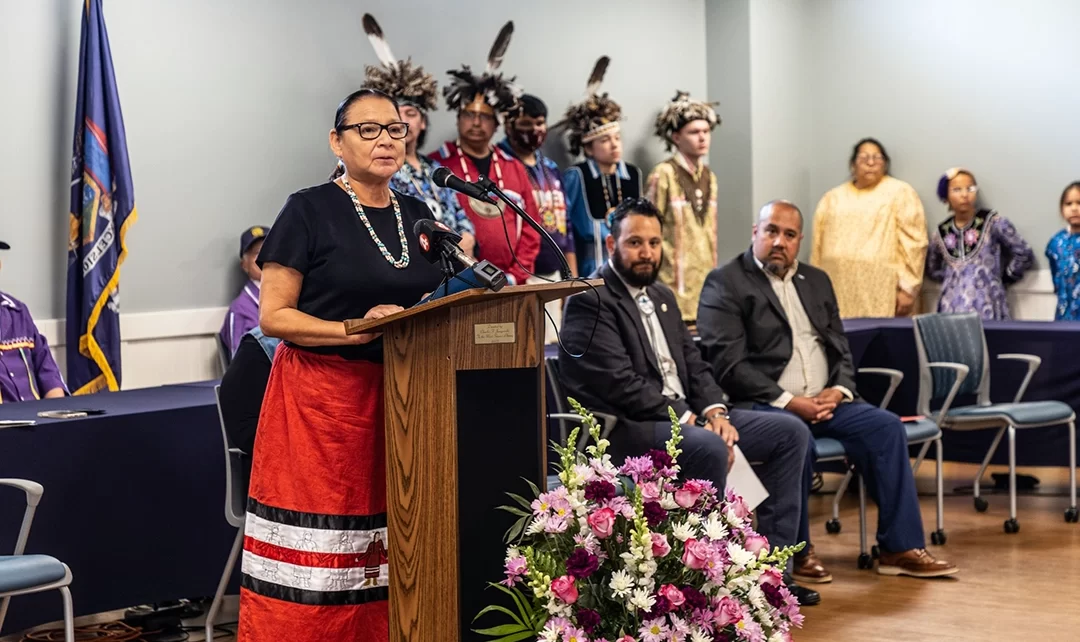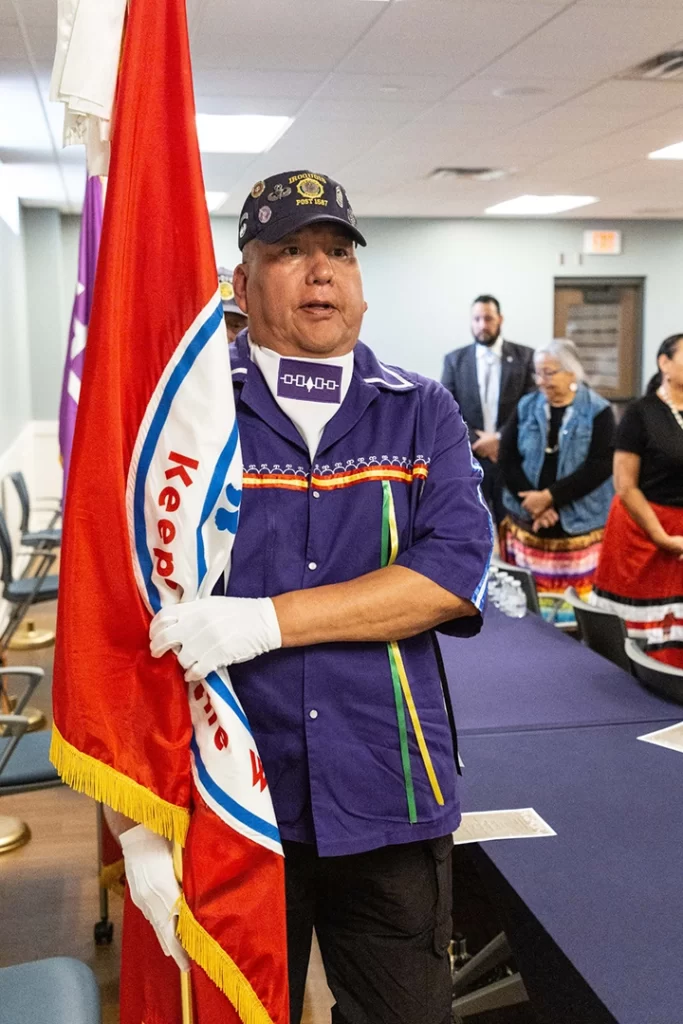Seneca Nation Commemorates Signing of Buffalo Creek Treaty of 1842 Treaty restored Seneca lands, affirmed Nation’s sovereignty
WEST SENECA, N.Y. – Leaders from the Seneca Nation and other dignitaries and guests gathered today to commemorate the historic significance of the Buffalo Creek Treaty of 1842 at a commemoration event in West Seneca.
The treaty forever shaped the history of the Seneca Nation, and that of Western New York.
Signed between the Seneca Nation and the United States at a location in what is now known as West Seneca, the Buffalo Creek Treaty of 1842 restored Seneca possession of the Nation’s Cattaraugus and Allegany territories after an earlier, manipulated treaty attempted to stake claim to all Seneca lands and relocate the Seneca people to present day Kansas. The Buffalo Creek Treaty of 1842 further affirmed that the Seneca Nation will never be subject to taxation on Indian-owned lands.
This year marks the 180th year of the treaty, and Seneca Nation President Matthew Pagels found significance in that number.
“Things could have gone 180 degrees in another direction for the Seneca people, Onondowagah, as we are known in our traditional language,” he said. “Had others gotten their earlier wish, the Seneca Nation – the Seneca people – wouldn’t even be here. The Seneca people would have been whitewashed out of Western New York. What would this region look like today without us? Instead, our Seneca ancestors stood firm. And here we are today, 180 years later, because of their strength.”
Today, the Seneca Nation consists of five distinct territories: the Allegany Territory, 31,095 acres along the Allegany River, including the city of Salamanca; the Cattaraugus Territory, 22,011 acres of land along Cattaraugus Creek near Lake Erie; the Oil Spring Territory, one square mile in Cuba, New York; the Niagara Territory, 50 acres of land in downtown Niagara Falls, New York, where Seneca Niagara Resort & Casino is located; and the Buffalo Creek Territory, nine acres of land in downtown Buffalo, where Seneca Buffalo Creek Casino is located.
The Nation has made countless contributions to the history, culture and economy of Western New York, and today stands as one of the region’s most significant economic engines, employing thousands of workers among its business enterprises and government operations.
Article 9 of the Buffalo Creek Treaty of 1842 clearly states that the United States agrees to “protect such lands of the Senecas with the state of New York as may from time to time remain in their possession from all taxes, and assessments for roads, highways and other purposes until such lands shall be sold and conveyed by said Indians and possession thereof shall be relinquished by them.”
Seneca Nation Councillor Tina Abrams acknowledged, and reminded all in attendance, that, despite the promises made in the Buffalo Creek Treaty of 1842 and other treaties and agreements signed throughout history, and despite the many indelible contributions the Nation has made, the challenges brought against the Seneca Nation and all Native Nations in the United States continue to this day.
“The fight that our ancestors fought – for our identity, our land and our sovereignty – is a fight that we still fight, and will always fight,” she said. “History, as we know, has a way of repeating itself. From Buffalo Creek to the Kinzua Dam, attempts at illegal taxation to the unconscionable freezing of our bank accounts, the attacks against our people, our way of life and our very existence have never stopped. But, just like the waters of Buffalo Creek, we are still here, we are still strong and we will never relent.”
The commemoration ceremony also included traditional Seneca music and dancing. Today’s event was the first commemoration ceremony held since 2019, before the coronavirus pandemic forced the event’s cancellation in 2020 and 2021.
President Pagels offered a message of hope that future generations of Seneca will continue to gather and commemorate the treaty as a reminder of its meaning and significance, of the strength and perseverance of the Seneca people throughout history, and as a collective obligation to always defend their sovereignty.
“Our presence will stand as testament that our treaties and agreements are living history, rooted in the recognition of our sovereignty,” he added. “Because of our ancestors, and through those of us here today and those who come after us, Onondowagah will live on across the generations – forever.”







